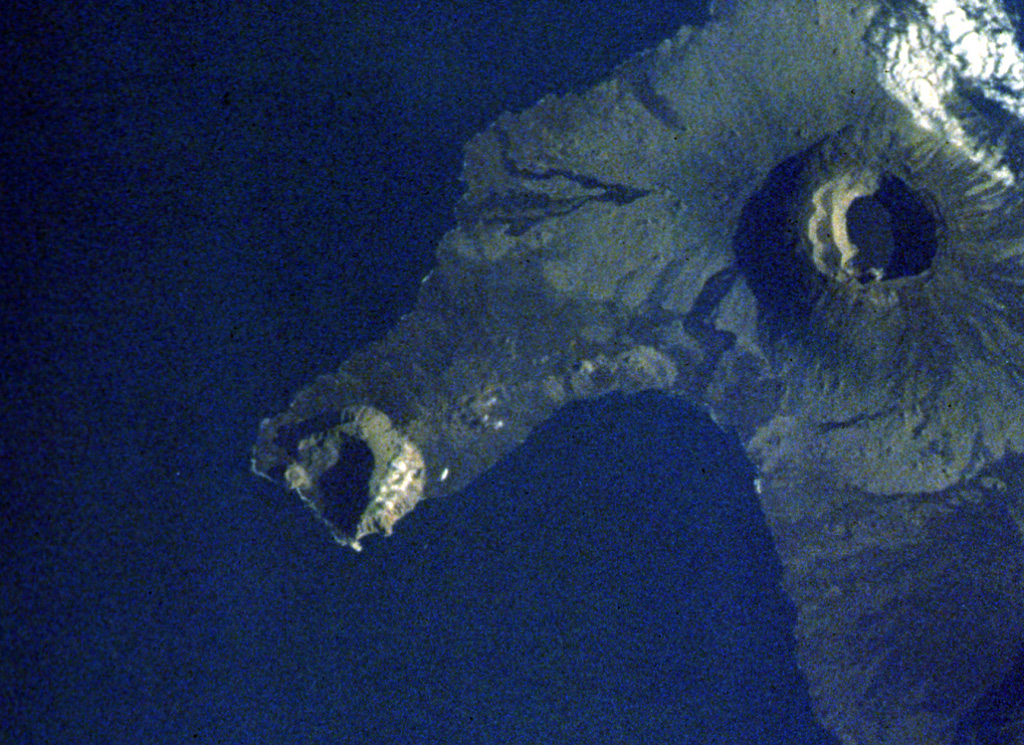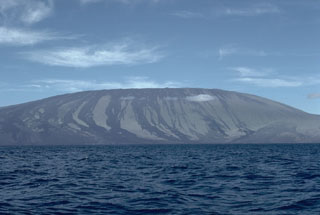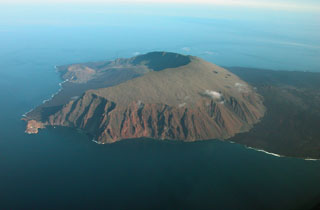Global Volcanism Program | Image GVP-09114

Volcán Ecuador (left center) forms the tip of a peninsula straddling the equator at the NW end of Isabela Island. The western side of the volcano, the smallest of the six large shield volcanoes on Isabela, is breached nearly to sea level. A line of fissure-fed vents on the outer eastern flank can be seen connecting Volcán Ecuador with Volcán Wolf (upper right). Despite the absence of historical eruptions from Volcán Ecuador, the youthful morphology of its most recent lava flows resembles those of very recent flows on other Isabela Island volcanoes.
NASA Space Shuttle image S-27-42-018, 1984 (http://eol.jsc.nasa.gov/).
![]() This image is made available as a Public Domain Work, but proper attribution is appreciated.
This image is made available as a Public Domain Work, but proper attribution is appreciated.

Wolf

Ecuador
